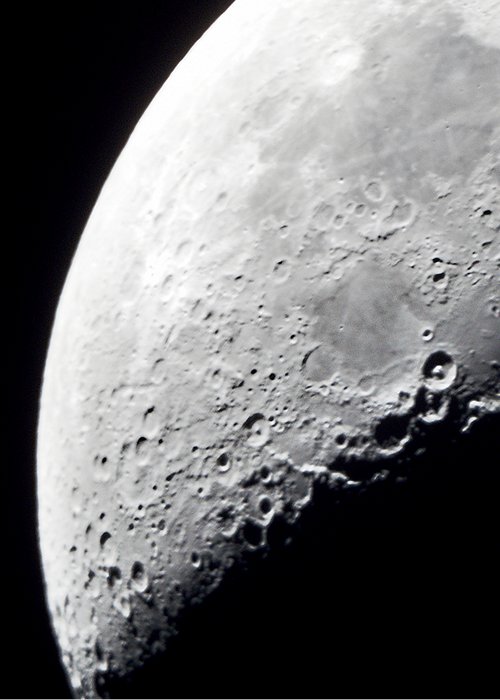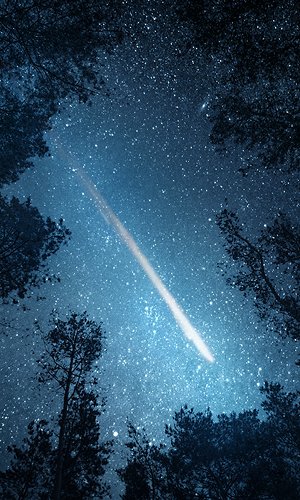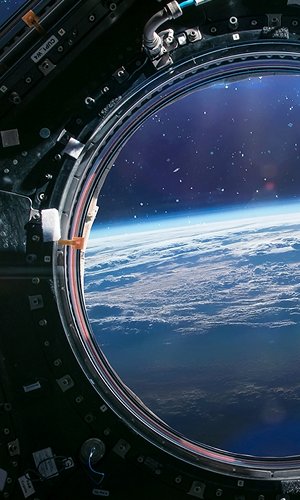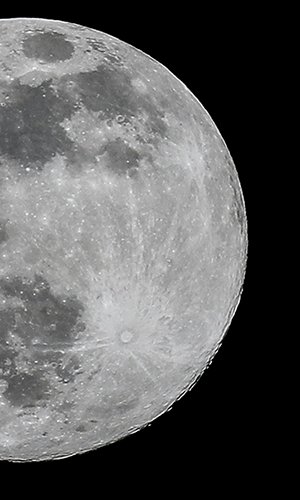The Moon always shows the same face to Earth, and the reason is simple: it takes the same amount of time to rotate on its axis as it does to orbit around our planet. Even though we can’t see it, we might imagine that the hidden side looks just like the side we can see. But that’s not the case, and today, we might finally know why. Let’s start with a clarification: the side of the Moon we don’t see isn’t dark—it’s as sunlit as the side we can see. It’s "dark" only in the sense that it’s unknown to us. Thanks to the Chinese Chang’e-6 mission, we now have two kilograms of samples collected by robots that explored the Moon’s far side. This extraordinary mission culminated when a capsule parachuted into Mongolia on June 25, 2024, delivering these invaluable rock samples to help illuminate a mystery that still, figuratively, remains in the dark. Why is the side of the Moon we see so different from the side we don’t? First off, how are they different? We all know what the Moon looks like. How many times have we looked for the Sea of Tranquility or the Sea of Serenity on a full Moon, perhaps during a romantic or melancholic moment? In any case, it’s always an emotional experience. About 16% of the lunar surface is covered by "seas," which are not filled with water like on Earth but are vast areas of basalt, a dark type of rock formed billions of years ago from molten lava caused by large asteroid impacts that scorched the surface of our battered satellite. The lighter areas of the Moon are covered in regolith, a type of rock that reflects sunlight, making them appear brighter. These regions are also more elevated than the seas, forming plateaus and hills. Since 1959, when the Soviet Luna 3 spacecraft sent back the first images of the hidden side, we’ve known that there are no seas there. Instead, this face boasts mountains and craters, displaying a nearly uniform light gray color. Moreover, gravitational data shows that the crust on the far side is thicker than on the side we see—on average, about 20 kilometers thicker. This thickness disparity is another crucial distinction between the two lunar hemispheres. So, why does the Moon have two such different faces? To answer this, we must trace back to the origin of our natural satellite. How did the Moon form? According to a widely accepted theory, the Moon was born when a Mars-sized planet collided with Earth in a glancing blow—a collision between young, still-molten planets. The planet, named Theia by astronomers, struck Earth 4.6 billion years ago. The impact tore away a massive amount of debris and molten rock from our planet, which eventually formed our Moon. The newborn Moon was incredibly close to Earth, only about a tenth of its current distance. This means that at the time, the distance between Earth and the Moon was just 30,000 kilometers—less than the circumference of Earth, which measures 40,000 kilometers at the equator. Imagine how massive the Moon must have appeared in the sky back then—a full moon that would have dominated much of the celestial dome. The Moon began synchronizing its orbit and rotation right away, always showing the same face to Earth. Perhaps it’s in this special relationship between Earth and the Moon that we find the explanation for the differences between the two sides.
The Moon exerts tidal forces on Earth, and Earth does the same to the Moon. These tidal forces, which now move our oceans, must have also affected the not-yet-solidified rocks back when the Earth and Moon were closer together. In that situation, perhaps Earth’s gravity caused the two faces of our satellite to change forever, maybe even altering the solidification of the molten rocks. Or’ another hypothesis suggests that the impact created two moons, and eventually, one collided with the other on the side we can’t see. Neither explanation is entirely convincing. But today, thanks to the samples China has brought back, this ancient mystery might finally be unraveled. The key might lie in a long, slow "cooking" process. The impact with Theia vaporized part of still-hot terrestrial rock, turning the rest into lava. For a very long time, Earth’s surface remained covered by molten rock at 2,000 degrees Celsius. The side of the Moon facing our nascent planet endured a slow roasting, while the other side, exposed to space, cooled rapidly. The visible side may have developed a thinner crust and more volcanic activity, while the hidden side remained relatively cool, forming a thicker crust. At least, that’s the most reasonable hypothesis for now.
Source:





